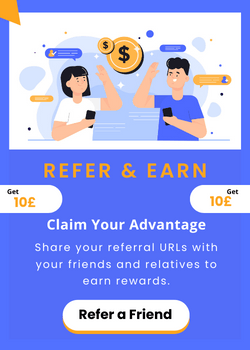Introduction:
The current report is based on analyzing different readings by Bailin, Goldman and Phartiyal (2014), Jacobs and Richtel (2017). An analysis of ethical consideration and outcomes of using Cialdini’s weapons of influence is done with respect to marketing of high sugar products. Thus, these ethics are considered when the business market high sugar products to the vulnerable consumers of US and Brazil. Further, the suitable recommendation is being given so that ethically problem of marketing of sugar products could be done in the market. In addition, the analysis is supported with Cialdini’s weapons of influence that affect businesses to take respective decisions.
(A.) Analyse the ethical considerations and outcomes of using Cialdini’s weapons of influence to market high-sugar products to vulnerable consumers in the United States and Brazil.
Sugar companies’ public relations, marketing, and sales activities are effective at disseminating disinformation since they leverage on important cultural values and skew the public’s training in food decisions, particularly wellness customers’ choices (Scott et.al 2017). The availability and accessibility of food with little or no adolescent advertisements are utilized by the businesses. Generally, no such ethics is being followed because the fact is being known that the kinds of sugary products that are being advertised are related to harm to health consciousness of the consumers. From the reading of Bailin et.al. (2014), it can be analysed that Pepsico have the high amount of advertising in US food industry and also it is successfully able to mislead customers. And these brands are the reason for major source for added sugar for Americans.
As per the weapon of influence, that is commitment and consistency, the brands try to market the product that is aligned with external behaviours and inner beliefs and values. The brand with respect to marketing the products follows commitment towards ethical way of advertising as every information about the products is printed on the label. The evidence of miscommunication has been elaborated in the study of Modic and Lea, (2013) that convey that attractive advertisement and sugary taste leads to gain the attention of the vulnerable consumers. Instead of emphasizing a product’s features, today’s industrial message tries to relate items to the lives of customers.
The weapon of influence here supports the human nature to consumer particular products that is social proof. It is believed that Human beings are tribal by nature and if the product is liked by one consumer it will definitely recommend to the other one (Kenrick et.al. 2012). And the method of advertising adopted by the brand such as Pepsico, CocaCola, Kraft, etc tend to attract consumers focusing on attractiveness of the product rather than communicating about the qualities of the product (Tieleman, 2016). The theory of manipulation is applied here where the consumers get manipulated with the advertising of the brands rather than giving attention towards ethics of the brand. And also the high sugary products are liked by the customers as they are good in taste.
(B.) Suggest one alternative or improvement to address one ethically problematic outcome of marketing high sugar products
The problem of false advertisements and miscommunication by the brands could be respectively solved through the greater attention of media. It could be recommended that high sugary products are seriously causing harm to the health of the people. It is necessary to increase awareness among the vulnerable consumers. For instance, media could be responsible to publicly call out the sugar and interest and misstatements done by the brand to target consumers. Brands are manipulating the ethics associated with marketing that is informed consent and conflicts of interest. Generally, the high sugary products are being still marketed and business advertises for the sake of their profits. The false advertisement is concerned with manipulation of the consumers towards content of the products and only focuses on advertisements of the product.
The obstacles that might arise are concerned with unknown interest of the people if they would follow or not because these sugary products are good in taste. The Food and Drug Administration should put in place a robust regulation mandating added sugar to be labeled on nutritional information, as the agency has stated it plans to do. This will provide more information to the public regarding the amount of sugar added to processed goods (Kass et.al. 2014).

Conclusion:
From the analysis, it can be concluded that marketing of sugary products had been analyzed using some weapons of influence. And with that it is necessary to bring change towards the branding strategies of the high sugary products. Therefore, the context of brand towards production of high sugar products is necessary to be monitored and food and beverage department need to set guidelines regarding the ethics to be followed in context of marketing.
References
Bailin, D., Goldman, G. and Phartiyal, P., 2014. Sugar-coating science. Union of Concerned Scientists.
Scott, C., Hawkins, B. and Knai, C., 2017. Food and beverage product reformulation as a corporate political strategy. Social science & medicine, 172, pp.37-45.
Tieleman, D.J., 2016. Transparency in the food sector: stakeholders pressure and sustainability disclosure strategies (Doctoral dissertation, University of Groningen. Faculty of Economics and Business).
Modic, D. and Lea, S.E., 2013. Scam compliance and the psychology of persuasion. Available at SSRN 2364464.
Kenrick, D.T., Goldstein, N.J. and Braver, S.L., 2012. Six degrees of social influence: Science, application, and the psychology of Robert Cialdini. Oxford University Press.
Schwartz, M.B., 2017. Moving beyond the debate over restricting sugary drinks in the Supplemental Nutrition Assistance Program. American Journal of Preventive Medicine, 52(2), pp.S199-S205.

 + 44 20 8144 3706
+ 44 20 8144 3706
